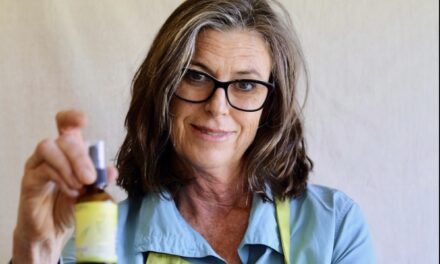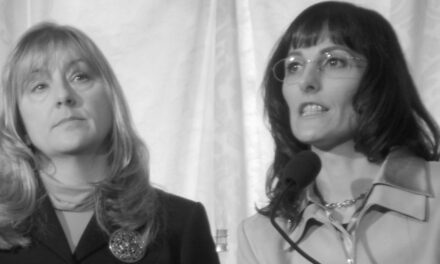From O’Shaughnessy’s Summer 2010:
Willy Notcutt, MD, is a pain specialist at James Paget Hospital in Great Yarmouth, England. He conducted the phase 2 clinical trials for Sativex in 1999-2000.
Notcutt’s first step had been to assess the basic efficacy and optimum dosage range of Sativex (prior to clinical trials) by means of “N=1” trials. In N-of-one trials, as they’re called, data is collected from individuals as their use pattern changes. The number N of patients involved in each study is one, hence the name.
We asked Notcutt if there was any reason why California doctors could not use a similar approach as CBD-rich strains become available to their patients. This interview was conducted in Koln at the 2009 meeting of the International Association for Cannabis Medicine. Notcutt was speaking as an individual and the views expressed may not represent G.W. Pharmaceuticals’ position. —F.G.
Notcutt: The advantages of N-of-1 trials were first described by a chap named Guyatt in Toronto. The fundamental thing is that the patient acts as his own control.
O’S: Is there a standard design?
Notcutt: It’s very flexible, you can design it any which way you want to. Presumably the patients are currently using a high-THC strain. First you establish the baseline: what’s the patient’s [self-reported score on a] pain scale or the sleep line, or whatever parameters you want to measure. Then you start them on the current drug for a week. Then you put them on the new one. Then you switch them back to the current one, and so forth.
It can be done as many times as you want and for any period —one week, two weeks, six weeks. You can leave it open, you can do it single-blinded [not letting the patient know what he’s taking], you can do it double-blinded [neither doctor nor patient knowing which strain is being used]. But by far the easiest way to start out is to do a straight observational study: open observation and open label [both doctor and patient know what’s being used].
The patients are going to tell you pretty quickly whether they prefer current drug or new drug. The advantage of going from current drug to new drug is, that is what a clinician actually does. That’s how medicine is practiced.
I say, “ Try this.”
“Not much help.”
“Now let’s try you on this new drug.”
“Yeah, well I think that drug has helped me.”
I appreciate that you have a problem with standardization, but a lot of people [medical cannabis users] say, “I always get this type, I know how to work it, I fine tune it, if it’s a little weak or strong I smoke a little more or smoke a little less.” Call that the current drug, which we assume is high-THC, and then compare it with high-CBD.
That’s what you’re testing: the comparative efficacy of high-THC and high-CBD cannabis. You’re using the patient as his own control and you plot it out: How many times do they smoke each day? What effects are they getting?
It’s close to what you normally would do as a clinician. That’s how I evaluate a drug anyway. If you define your parameters, and get reports from 20 patients, you can then get a feel for whether it works.
I would suggest that it be done completely open-label at first.
Guyatt’s is not the only paper on N-of-1 trials. I have one from the BMJ [British Medical Journal] from a few years ago saying that this is the way we should be studying chronic disease. It’s a well-recognized, acceptable clinical approach. But people have gotten so fixated in the last 20 years on the randomized, placebo-controlled trial, (sarcastically) ‘the only way you can do it,’ ‘the gold standard.’
I think the N-of-1 trial is the only way you study this cohort at this time, because of your problems with standardization. You have people doing it different ways… But your individual patient becomes your study. And then you can aggregate your studies. You can do some simple statistics on it: of 20 patients that started, five found it didn’t work for them at all. Now let’s look at the 15 that reported effect…
Then you can go on and blind your subjects and not tell them which is which. Or blind the physician.
Guyatt wrote about building in a placebo, but you needn’t go to that extent. That’s not how we do medicine. The RCT [randomized, controlled trial] is furthest from normal clinical practice.
The N-of-1 trial is a good way of generating some data where no data exists. The first two or three studies were all N-of-1, until we knew that it worked. If nine of the first ten patients had said, “This doesn’t work,” then you don’t go further.
You have to start somewhere. An observational study has the force of common sense. It may be best suited when you have a long-term chronic illness and you need some information about whether a drug works…
Do we give an orthopedic surgeon and an eye surgeon the same tools? No. So should we statistically evaluate every medical problem by the same technique? If we’re evaluating a drug where the blood pressure goes up or down, or the sugar level goes up or down in diabetes, we use one technique.
Why use the same technique for a drug that has a completely different spectrum of activity, in an area where you don’t get nice, number data, where you get much softer data, you get subjective opinion? There’s a whole difference in the quality of the data —why use the same statistical tools?
People are now starting to say that evidence-based medicine is becoming a tyranny that’s killing off research. I’m very interested in this because I’m the lead for research in our district I’m also the lead for research in my own field.
If you start insisting on these big multi-center big studies, all randomized, and you don’t nurture the small studies -the little ones that come along, the N-of-1s that come along where the guy sits down and works on an idea, “Try this out, try that out” in a few patients, and generates a little bit more information that then leads to a bit of a better study…
I still regard as one of the best studies ever, the guy who treated pain after shingles with amtriptyline or nortriptyline. All he did was he found out that when he used the amitriptyline, 60 percent of the patients hated it. When he used nortriptyline only about 30 percent of the patients hated it.
A simple trial —but it changed our practice. We stopped using amitriptyline, we use nortriptyline. And now we know the reasons why. That was 10, 15 years ago. I’ve never seen that simple study replicated as a clinical trial of amitriptyline versus nortriptyline because there’s no money in it for the drug companies.
PS December 2017
Looking for the above on my computer I found the interview transcript, which I’d sent to Dr. Phil Denney. Cut from the published version were a few lines updating Notcutt about our finding CBD in California cannabis:
O’S: … Four or five strains of interest have been identified by the lab [Steep Hill]. Growers are growing out clones from the mo ather plants, and dispensaries [Harborside and Peace in Medicine] are beginning to make them available. As of mid-Otober, several pounds of processed bud will be available to patients and there’s more in the pipeline, and there’ll be as much as demand dictates in the months ahead. Doctors in the Society of Cannabis Clinicians want to evaluate these strains and see if they’re advantageous in treating various conditions. In fact, they’ve been waiting years for this opportunity. Phil Denney [a a Sacramento MD who is past president of the SCC] said he thought the trials of Sativex you did for GW [the British manufacturer] were applicable to the situation that he and his colleagues find themselves in today with respect to high-CBD cannabis.
Notcutt: Indeed he’s right. Those were “N of 1” trials. N-of-1 trials were first described by a chap named Guyatt in Toronto. The fundamental thing is that the patient acts as his own control…
And I had cut from the tag:
Notcutt offered to review any study design that Denney et al come up with. I told him the SCC was meeting 10/17 and might produce a study design then and there. He asked “Are you going to submit it to an ethics board?” Before I could reply (that you learn or don’t learn the difference between right and wrong from your mother), Notcutt added, “It doesn’t require that. No need to submit to the tyranny of an ethics board!”





